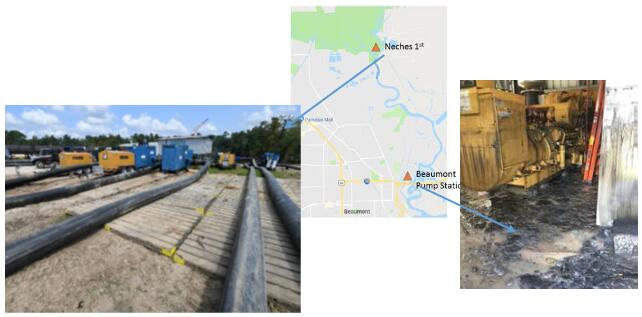Identification and Quantification of Economic Benefits of Climate-Informed Adaptation Measures To Reduce Flood Risk Exposure of Water Supply Infrastructures Along the Southeast Texas Coast
Dr. Qian's project is to assess the flooding risk of water infrastructures under a changing climate, and to develop plans to retrofit, upgrade, or relocate them to lower their risk profile.
Project PI
Dr. Qin Qian, Associate Professor, Department of Civil & Environmental Engineering
Short Description
Communities along the Texas coast are exposed to the triple threats of storm surge, rainfall-driven flooding, and a rising sea level. Among the most vulnerable infrastructures are the water supply and wastewater treatment systems. During Hurricane Harvey, a number of water supply and wastewater treatment systems and services were disrupted, nearly disrupted, or severely damaged. These include those serving the City of Beaumont and mid-lower Jefferson County that are critical to the operation of energy and health care industries.
The disruptions, together with the release of untreated sewage, compounded the flood-induced devastation to buildings and transportation infrastructures, and exacerbated the stress imposed on the communities. In addition, water quality problems lingered on after flooding which significantly increased the overhead of water supply, and put strain on recovery. Therefore, there is a critical need to assess the flooding risk of water infrastructures under a changing climate, and to develop plans to retrofit, upgrade or relocate them to lower their risk profile.

Full Description
Dr. Qian will lead the following tasks:
Task 1: Flood-proofed pump station
- The Neches 1st pump station was severely damaged during Harvey and bypass pumps had to be set up to maintain water supply after the event.
- Flood-proofing the old half of Neches 1st could include a) raising the walls and converting the existing structure to meet flood proof status, or b) constructing a new, flood proof pumping plant with the same capacity as the previous plant.
- This would also include converting from natural gas driven pumps to another source, e.g., electrical driven pumps (possibly with on-site backup generators). The capital cost of the project will include the purchase of equipment such as pumps, backup generators, and materials for sealing the plant, whereas construction of a new plant entails the costs of demolition of the existing facility and construction.
Task 2: In channel reservoir
- The second plan of building an on-channel reservoir is aimed at sustaining municipal and industrial customers for an extended period of time (e.g., 5, 10, 20, or 30 days) in the event of emergency interruptions.
- The reservoir would be located between the two main LNVA canals behind LNVA’s 2nd lift stations. In this location, LNVA could utilize its existing infrastructure to fill the reservoir. An additional water conveyance system would be required to deliver the stored water back into the canal system.
To gain the maximum capacity in the reservoir, this water conveyance system would discharge stored water back into the inlet side of the BI 2nd Pumping Plant, where it would be re-lifted again. Currently, about 500-600 acres of farmland are for sale in this area. Constructing the new reservoir will incur costs for land acquisition, environmental impact assessments, and building the new water conveyance system.
Funding
Office of Oceanic and Atmospheric Research (OAR), National Oceanic and Atmospheric Administration (NOAA), Department of Commerce, Funding opportunity Number: NOAA-OAR-CPO-2019-2005530, (subcontract from UTA), 09/01/2019-08/31/2022.